Lower back pain and cycling: I’m a physiotherapist, and here’s all you need to know
Incorrect bike fit, imbalances and simply sitting for too long during the day can all be contributing factors, writes physiotherapist, Nicole Oh
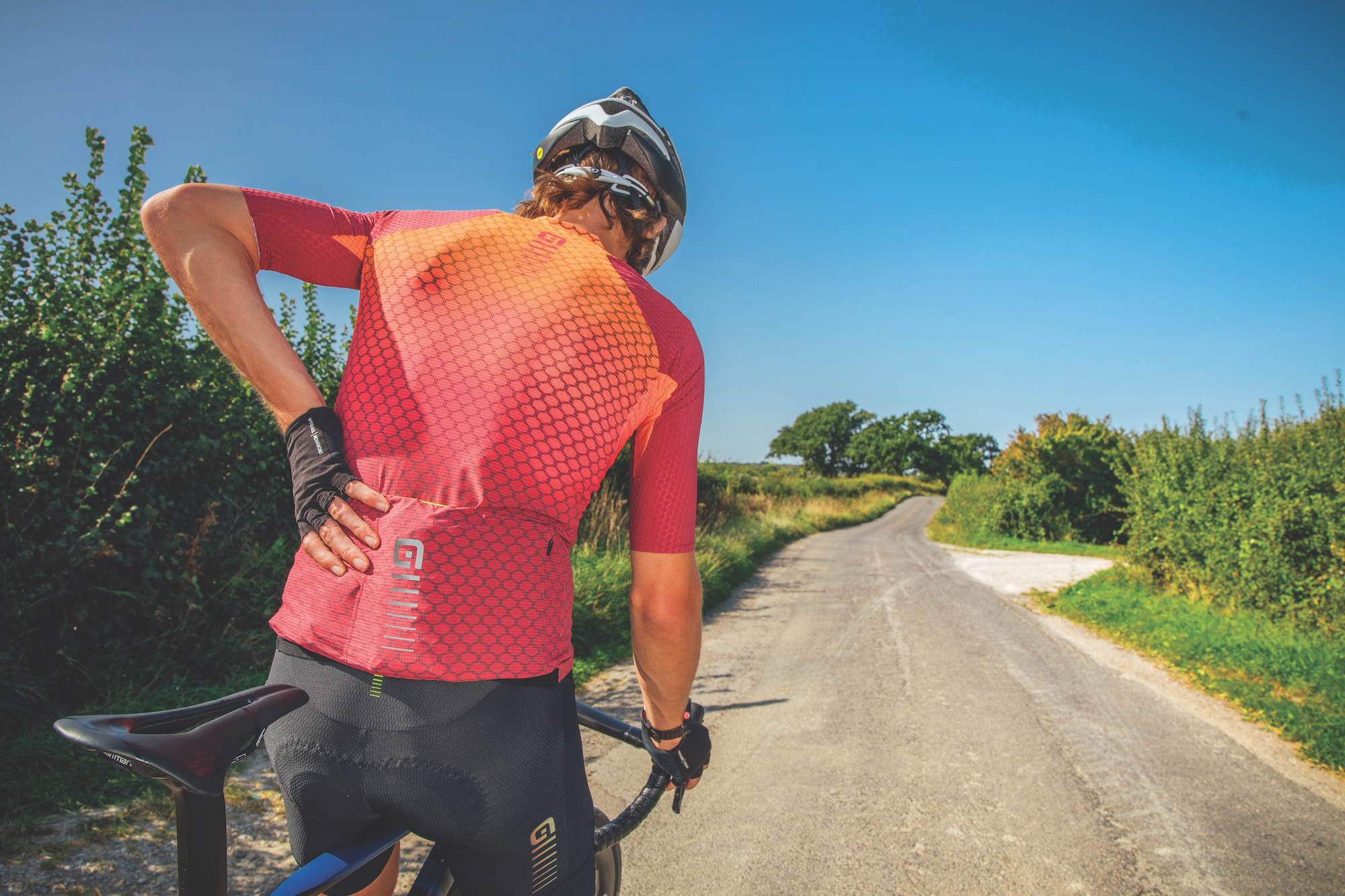
Back pain, in particular lower back pain, is a common ailment. In 2020, the World Health Organisation stated that 619 million live with the problem, that’s one in 13 people or 7.6% worldwide. It is believed that an estimated 75-84% of people will experience lower back pain at some time in their lives.
Statistics for cyclists show a similar story. Low back pain, along with knee pain, is the most common overuse injury across the sport. An Italian study which surveyed 1274 amateur cyclists found that the prevalence was 55.1%, 26.5% and 10.8% in life, in the last year, and the last 4 weeks respectively. In professional cyclists, this appears to be higher, with a Norwegian study showing 58% experienced lower back pain in the preceding year. Google search trends show that queries regarding lower back pain and cycling increase over the summer months, suggesting issues can become more prevalent as dedicated amateurs begin to increase their mileage.
Whilst many people’s discomfort may be exacerbated on the bike, it is harder to distinguish whether issues originate from cycling, or everyday life activities. The habits and behaviours of modern Western society, which frequently involve sitting down for a large portion of the day whether it’s at work, travel or at home, likely don’t help the situation.
Most lower back pain, around 90%, is referred to as “non-specific”, implying that there is no serious underlying condition. Any structure within and around the spine with a nerve supply can be the source of pain, the long list includes ligaments, muscles, joints, discs and fascia. In rare cases, lower back pain can be caused by nerve damage, fractures, tumours, infection, and inflammatory conditions - requiring medical attention - however, this will be a small minority of cases, often accompanied by significant pain and other symptoms.
What causes lower back pain in cyclists?
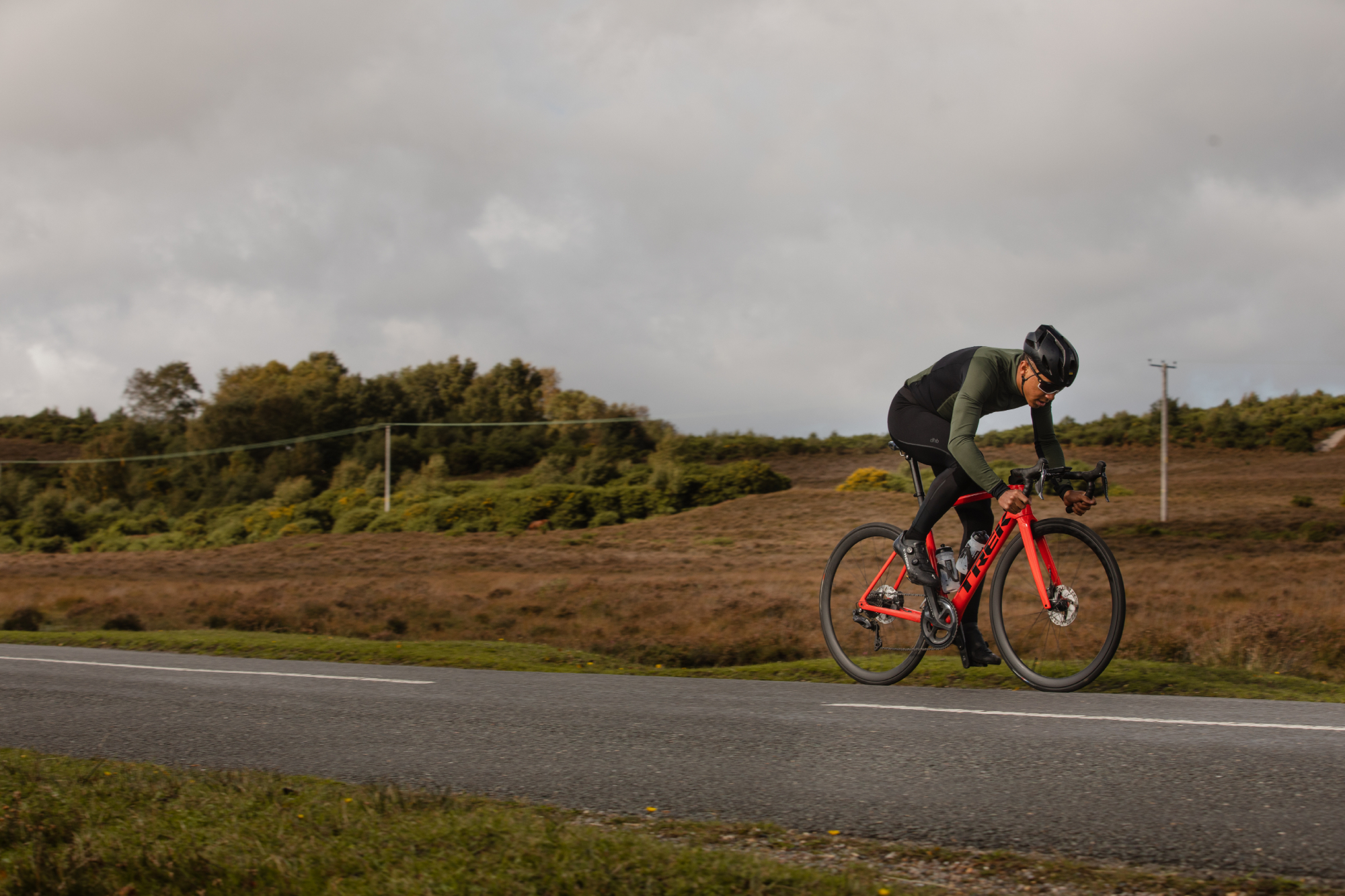
The pursuit of a low, aero position may exacerbate lower back pain
Riding a bike involves bending forward, often for extended periods. This prolonged flexed posture can place stress on the lower back, with a desire for a low aerodynamic position magnifying the effects.
The bent forward position comes from flexion of the hips or flexion of the spine itself. Those who do not have enough flexibility at the hips will compensate by flexing at the lower lumbar joints instead, overloading and irritating them. No joints like being loaded at the end of their range for sustained periods of time. The same can be said for the sciatic nerve which originates from the lumbar spine, and when irritated, can manifest as leg pain.
An inability to roll or tilt the pelvis forwards (anterior tilt) will result in less movement coming from the hips, which in turn means more flexion will need to come from the lower back. This can be due to tightness in the posterior chain (hamstrings, gluts, hip capsule or sciatic nerve) or a lack of stability at the pelvis. The hamstrings are attached to the sit bones on the underneath edge of the pelvis. Tight hamstrings will tend to pull these forwards and under, rotating the pelvis backward (posterior tilt). If your lumbar spine joints are stiff, too, they will reach their limit sooner. The notion that lumbar flexion is associated with lower back pain in cyclists has been supported by several studies.
Get The Leadout Newsletter
The latest race content, interviews, features, reviews and expert buying guides, direct to your inbox!
Excessive lateral flexion and/or rotation of the spine while cycling may also contribute to back pain, particularly if it is asymmetrical. This can be caused by a range of factors, such as a large leg-length discrepancy, restricted hip range of motion, and asymmetrical muscle activation patterns, as well as issues with saddle position.
Muscle imbalances, weakness, and not including enough conditioning for the level of riding undertaken, can cause lower back pain, too. A 2017 study on cyclists with and without lower bacl pain found that the latter group had core muscle activation imbalances and poor back extensor endurance, as well as increased lumbar flexion while cycling. The authors suggested that when fatigued, the spine may absorb increased load and stress rather than the muscles.
The role of whole body vibration (WBV) on the spine has been investigated recently. Occupational studies have shown that exposure to WBV increases the risk of low back pain, spinal degeneration, and injury. A study by Edwards and Holsgrove in 2021 found that road cycling results in substantial WBV, from bumps and changes to road surfaces more than the high frequency buzz from the road. This force needs to be absorbed by the muscular system, which can lead to fatigue and contractions/spasm which can result in breakdown from chronic loading. Interestingly, the progression of cycling tech should help, here, with the trend towards wider tyres run at lower pressures helping to dampen some of the blows.
Bike fit issues and low back pain
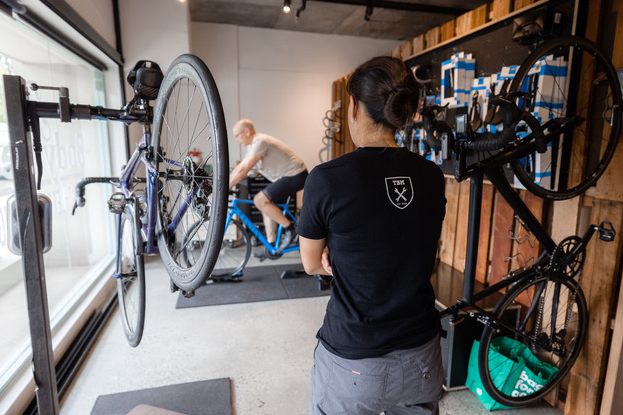
Improper bike fit can certainly be a contributing factor in lower back pain
Whilst the bike cannot wholly be blamed, a bike set-up that does not complement you or your riding can certainly be a contributing factor.
Poor bike fit can exacerbate poor posture. When everything on the bike is set up to promote good posture, the optimal cycling position of hip flexion, a neutral pelvis, and reduced spinal flexion should be more natural and effortless. This should result in the least strain on your joints for the most efficient amount of muscle work.
Saddle position is the foundation of a good bike fit. A well-fitting and correctly positioned saddle should support your pelvis and allow it to rotate forward.
If the saddle is too high, it can create instability of both your pelvis and foot, due to over-reaching at the bottom of the pedal stroke. This can also cause asymmetry as riders may sit or lean to one side to maximise function. A high saddle will challenge your posterior chain, especially if tight. A high saddle can also create an excessive drop, especially if riding a frame with an aggressive geometry.
A saddle that is too low perhaps creates fewer problems, but it can close off a rider’s hip angle and restrict the ability to hinge at the hips. It can also encourage a rounded or slumped spinal posture, especially if the saddle is flat and does not have any rear support.
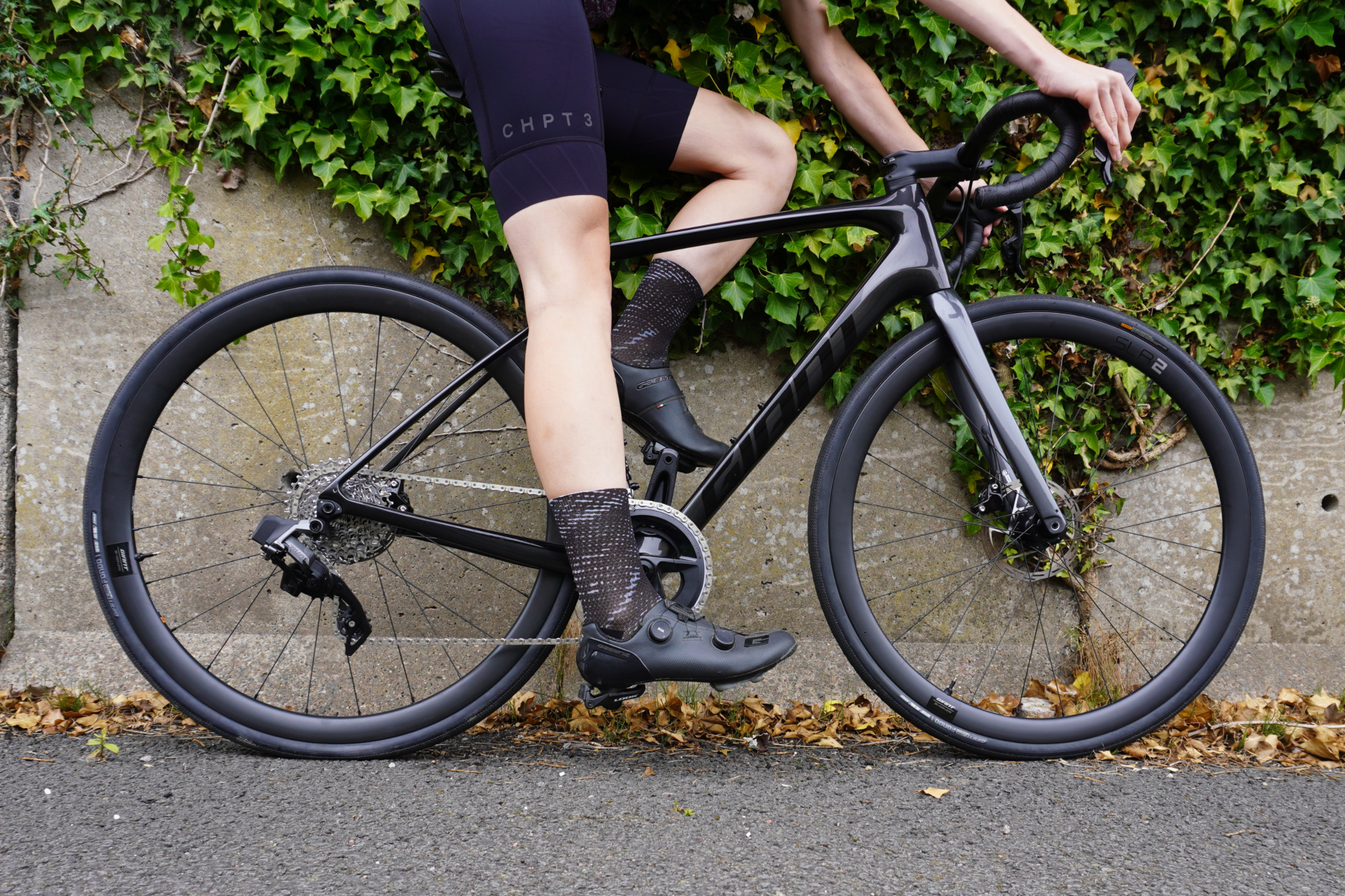
Saddle height and the angle of the saddle can make a big difference
The saddle itself needs to be considered. A saddle with no cut out - or one which does not suit the rider - may cause them to roll their pelvis back, in an attempt to relieve perineal pressure, increasing flexion of the lumbar spine. A saddle that is not wide enough for the rider’s pelvis won’t provide enough support, creating instability and rocking of the pelvis as well as perineal pressure.
Saddle tilt can influence lower back pain, too. An increased anterior pelvic tilt and decreased stress to the ligaments of the lumbar spine have been reported with a downward tilting saddle. Furthermore, a research study in 1999 found that appropriately tilting the saddle down decreased the incidence and magnitude of lower back pain in a recreational group of cyclists by 70%. Wave-shaped saddles with a kick up at the rear, such as Selle SMP saddles, can be tilted down to a greater degree without creating instability.
The other significant aspect of bike fit in lower back pain is the position of handlebars, more specifically the drop and reach. Excessive drop is usually more problematic, with low handlebars increasing the flexibility demanded of the hips and spine, particularly when riding in the drops. If the handlebars are too low for your level of flexibility and strength, it will put increased strain on your posterior spinal structures. Whilst excessive reach can also irritate lower back pain, cyclists are more likely to try to reach the handlebars by pulling their shoulders forward and rounding their upper backs, which is more likely to result in neck pain.
Excessive reach and drop may come about if a rider’s frame geometry does not suit their needs and physical capacity. An endurance geometry frame, with a higher stack and shorter reach may be more suitable for recreational riders, and those with less than optimal flexibility or strength, or who have physical limitations.
In my experience, I have quite often seen lower back pain in cyclists being caused by the handlebar reach being too short and too high. Many people think a more upright position is automatically better for spines, and have made adjustments to try to alleviate pain or protect their back. A position that is too upright will decrease the ability to hip hinge, meaning the glute muscles are used less, and increase the tendency to posteriorly tilt the pelvis and slump at the spinal joints.
Finally, a crank that is too long can cause pelvic hitching and excessive lateral flexion of the spine through the top of the pedal stroke. This issue is further exacerbated if the rider also has a restricted hip flexion range of motion, for example with hip impingement or osteoarthritis.
What should I do about lower back pain from cycling?
Like all overuse or overload issues in cycling, if you’re struggling with lower back pain, management will need to consider factors related to the bike, the body, and training load.
Any bike fit issues can be addressed with a comprehensive bike fit. It should include an interview and physical screening to enable the fitter to find an appropriate position for your individual needs and characteristics. If you are currently riding a bike with a suitable geometry, adjusting the components of your bike, or changing them if necessary (including the crank length), should enable an optimal position.
Bike fit revolves around the three contact points where the body connects with the bike - the pelvis on the saddle, feet on the pedals, and hands on the handlebars. An appropriate saddle type (width, shape) and position (height, fore/aft, tilt) are essential for pelvic stability and spine position. Proper cleat set up optimises foot function, stability and lower limb alignment. This may include the use of shim and wedges to address significant leg length discrepancies or foot instability. Handlebar position will influence the amount of flexion required from the hips and lumbar spine.
Others aspects of the bike that could be considered in regards to vibration are tyre pressure and carbon components. Riding wider tyres with lower pressures can dampen the harshness of the road and reduce vibration. However, there is debate whether carbon components are significantly effective in decreasing vibration, in particular the seat post and wheels in relation to lower back pain.
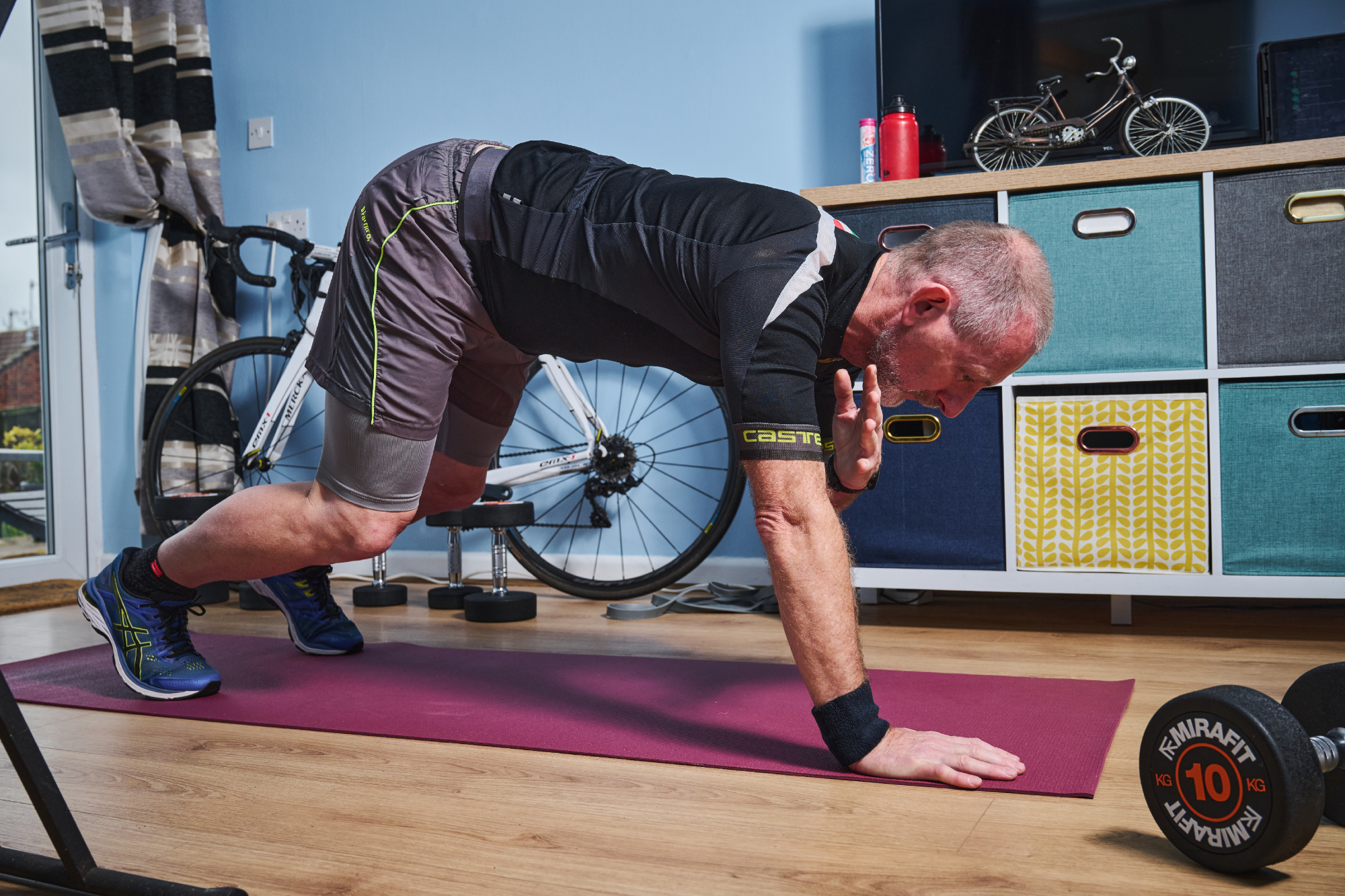
Working on core strength and stability can make a big difference
Greater conditioning, core strength and flexibility make you a more robust cyclist and allow you to absorb more load.
Cyclists with lower back pain should specifically address any hamstrings or posterior chain (gluts, hip capsule, sciatic nerve) tightness. Tightness will limit the amount of trunk flexion that can be achieved without being pulled into posterior pelvic tilt which will increase flexion load on the lumber spine, whilst also limiting gluts recruitment and the aerodynamic position.
Strengthening core stability muscles can help reduce lower back pain. A study of lower back pain in the Swiss National team found that 47.9% of athletes intensifying their core strength training over a 4 month period could significantly reduce their back pain in cycling, in competition, and in daily life. The muscles involved in lumbar and pelvic stability not only have to tolerate prolonged flexion of the spine but they also have to provide a stable platform to absorb the large forces generated by the legs. This includes the abdominal muscles, back extensors and lateral stabilisers (including gluts).
Being able to find and maintain a neutral pelvis position and dissociate hip from lumbar spine movement is also an important movement pattern in cycling. The ability to flex and extend at the hip whilst maintaining a stable, neutral spine/pelvic position requires not only a functioning core but also good proprioception. Pelvic tilting and hip hinging exercises with feedback can train this.
Managing and monitoring training load is required in all overuse injuries. Gradually increasing training volume, intensity and frequency is essential, as well as monitoring the body’s response to training, such as discomfort, tightness and fatigue.
Other load on the lower back should also be considered. It must be remembered that back pain may not only be caused by cycling, but it may be due to, or exacerbated by, other activities throughout the day, such as long hours sitting at a desk job, or repeated or sustained bending eg. cleaning your bike!
Fixing one rider's lower back pain
Gary* [not his real name] came to see me for a Physio assessment and Bike fit as he had a long history of lower back pain (LBP) that reoccurred every few years, following a disc prolapse 30 years ago. He had recently returned to cycling after a 7 month break from the last flare up. He was also looking to purchase a new bike.
Besides getting LBP and stiffness when riding, he was also experiencing saddle discomfort, right knee pain and a stiff neck on long rides. The main findings on screening were that he had poor control of his spine on the hip hinging movement and very tight hamstrings and poor sciatic nerve mobility.
On the bike, Gary was sitting very low and upright, with bracing through his upper limbs. I raised his saddle 20mm and reduced the tilt from -6deg to -1.5deg. He was also taught to bend at his hip and move his pelvis back on the saddle. His cleats were adjusted and changed from fixed float to 4.5deg float.
After these changes were made, it was noted that Gary was overextending his right knee and felt decreased connection on the right pedal. Despite not having a significant leg length discrepancy, a 3mm shim was fitted under his right cleat, which improved this symmetry.
After 4 weeks, Gary was feeling much more comfortable on the bike, with minimal LBP. We considered changing his saddle to a wider one with some rear support, but his saddle discomfort had decreased and he was able to maintain a neutral pelvis with his current saddle. We did increase his reach and drop by replacing his 70mm stem which he had inverted (+6deg) to a 90mm -6deg stem. The saddle was also moved back another 7mm to encourage more hip flexion and glut activation.
Gary rode for another 4 weeks in this significantly changed position, before having the confidence to buy a new bike, the Giant Defy, which has an endurance geometry. The stock stem needed to be shortened, but otherwise, we were able to replicate his position on his new bike.
Gary was already working with a local physio to manage his LBP off the bike with regular pilates and a tailored strengthening program. I added some mobilisation exercises to his program to try to decrease the tightness of his posterior chain.

Thank you for reading 20 articles this month* Join now for unlimited access
Enjoy your first month for just £1 / $1 / €1
*Read 5 free articles per month without a subscription

Join now for unlimited access
Try first month for just £1 / $1 / €1
Nicole Oh is a physiotherapist and bike fitter, with training in biomechanical assessments, sports injury rehabilitation, acupuncture and clinical pilates.
A competitive cyclist with a background in triathlon, Nicole raced at National level in the UK, also managing and co-founding the Les Filles Racing Team. Having moved to Sydney, she works as a physiotherapist at The Body Mechanic and continues to race competitively.
-
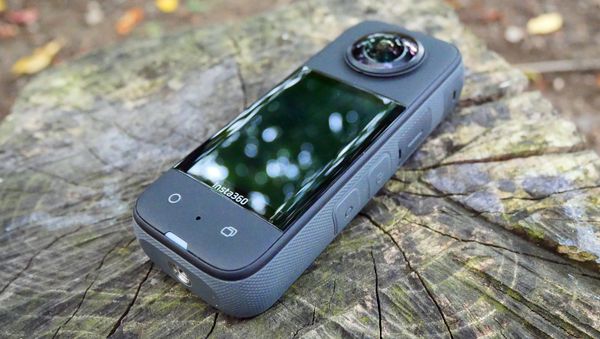 I have been capturing my cycling adventures for over 20 years, and two of the best action cameras for cyclists have just hit their lowest prices on Amazon
I have been capturing my cycling adventures for over 20 years, and two of the best action cameras for cyclists have just hit their lowest prices on AmazonDeals Amazon has slashed the price on Insta360 cameras, including the highly rated X3, which has a huge 30% off
By Paul Brett Published
-
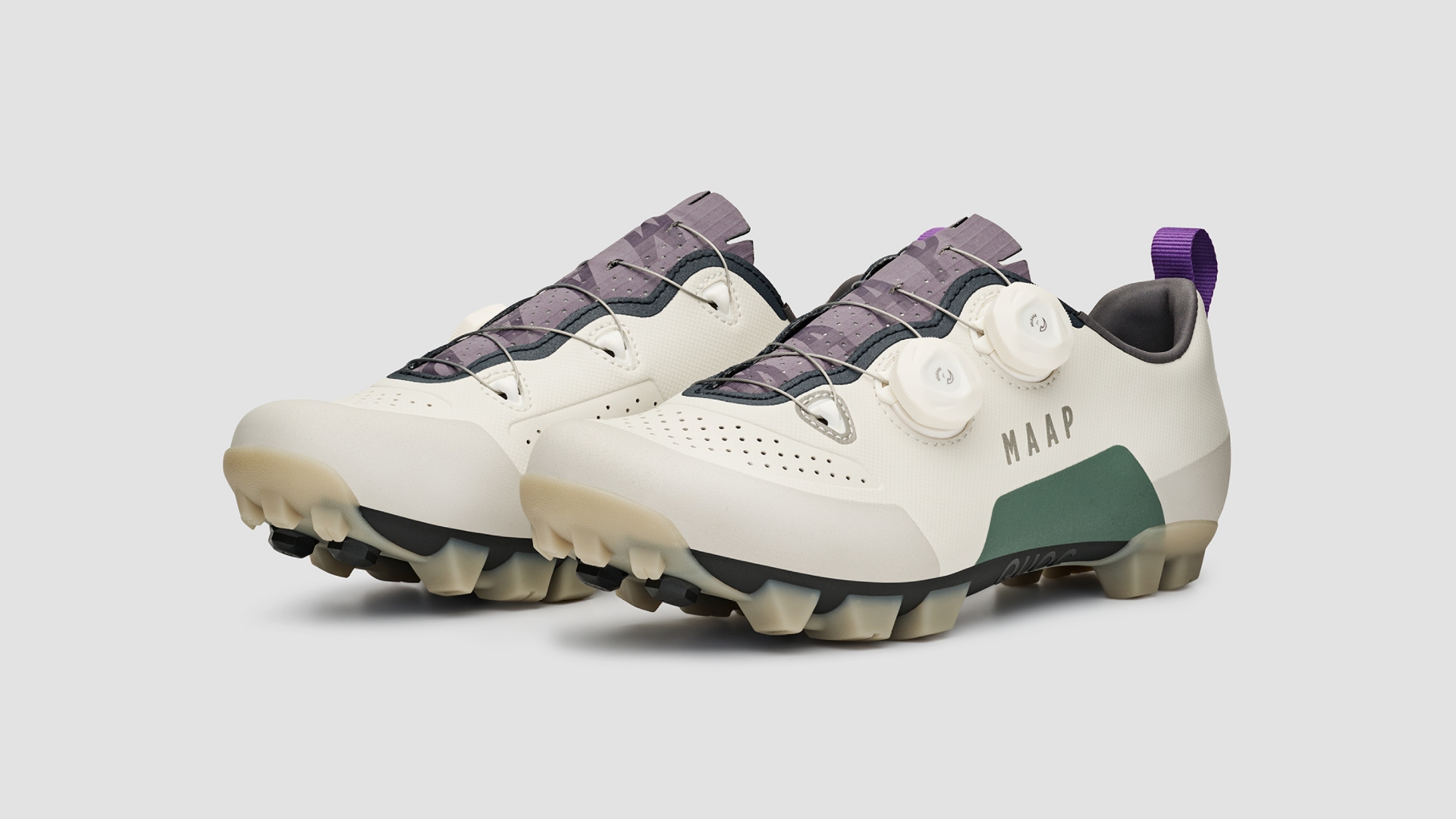 MAAP teams up with QUOC; first collab is the Gran Tourer XC shoe
MAAP teams up with QUOC; first collab is the Gran Tourer XC shoeDesigned for off-road riding the limited-edition shoe features a new colourway and other features
By Luke Friend Published